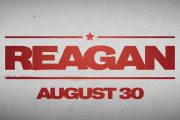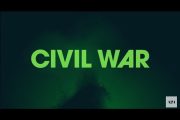In an era of too many sequels for the sake of sequels, where the best three minutes of the sequels are in the trailers, Captain America: Civil War lives up to its buildup. And then some. Besides being a good film, there are valuable elements in the story itself and in the development of the characters — both familiar and new — that mirror real-world post-9/11 events and reactions.
Unlike Batman v Superman: Dawn of Justice, the plot for Captain America: Civil War has been building for years. While no one wants to see the Avengers fight each other, it eventually had to happen. There has always been tension between Captain America and Iron Man. And it’s not a tension born of petty differences; their basic values are at conflict. While they both want to make the world a safer, better place by fighting evil, they have very different ideas about how that should be done. It’s not unlike the differences between America’s Founding Fathers.
In fact, the battle lines were already being drawn in Avengers when Steve Rogers (Captain America) reads Tony Stark (Iron Man) the riot act over his “pretending to be a hero.” Having fought in WWII alongside men who knew the value of sacrifice for the greater good, Rogers tells Stark that his high-tech Iron Man suit is not what makes a hero. “I know guys with none of that worth ten of you. I’ve seen the footage. The only thing you really fight for is yourself. You’re not the guy to make the sacrifice play, to lay down on a wire and let the other guy crawl over you.” Stark, always pragmatic (and fundamentally self-serving), replies by telling Rogers, “I think I would just cut the wire.” Rogers dismisses not only the answer, but the man, by saying, “Always a way out. You know, you may not be a threat, but you better stop pretending to be a hero.”
And so — while they somehow managed to set their differences aside (or at least work around them) and work together as Avengers to fight evil — it always had to come to this. The realization that S.H.I.E.L.D. — a government organization ostensibly formed to combat global tyranny — was all the while merely an incubator for HYDRA —which fomented that very tyranny — fostered trust issues for the Avengers. Stark’s major gaffe in creating Ultron certainly didn’t help matters, further straining relationships.
Mild Spoilers Ahead: If you know nothing about this movie, you may want to stop here. While there are no major spoilers, some of what I will cover can’t be seen on the movie poster or the trailer.
When another Avengers mission causes “collateral damage” on foreign soil (as has been the case with real-life U.S. drone strikes), there are demands for the Avengers to be placed under the authority of the United Nations. Such a move would of course give the United Nations the power to control the world and force all nations to abide by its dictates. This consolidation of power supposedly would be exercised to safeguard world peace. But such a monopoly of power could also be used to impose global tyranny.
Stark, still nursing his bruised ego and self-doubt, agrees that the UN should take control — and he wants oversight at nearly any cost. Rogers, with his 1940s American grit fully intact, fears the results of allowing the Avengers to be controlled by the UN, which could either send them or refuse to send them on missions for political reasons.
This is an interesting element in the film and in the character of Captain America. He is — after all — Captain America. His costume is the U.S. flag. He comes from a generation that stood on its own in most everything. Unfortunately, that is the same generation that saw the United States join the United Nations in the first place. Rogers, though, will have none of it, saying, “The safest hands are your own.” Captain Rogers is guided by the same good, old-fashioned values and common sense that led him to confront Nick Fury over both Big Brother surveillance and the “Bush Doctrine” idea of preemptive strikes in Captain America: The Winter Soldier. He was right then and he is right now.
With the rift between Captain America and Iron Man, the others have to choose sides. The result is a polarization that builds to conflict and eventually outright battle between the Avengers with both #TeamCap and #TeamIron recruiting new members. Ant-Man, Black Panther, and Spider-Man join in the battle and lay the groundwork for the success of their own franchises.
Ant-Man — which was released last year and grossed almost $200,000,000 — is already off to a good start. Ant-Man brought both his shrinking ability and his odd personality to the battle. It was a pleasure to see him on the screen amidst his fellow Marvel heroes even if he was fighting half of them.
Black Panther is set to come to theaters in 2018, so this was his movie debut. He did not disappoint. Both mysterious and formidable in battle, he brought a new intensity to every scene in which he appeared — both in and out of costume.
But, at least for me, the best introduction was Spider-Man. Though the web-slinger has had several cinematic reboots, I have never really seen any of them as the Spidey of the comic books I read as a young man. This new iteration nails it. He is young, nerdy, witty, and quirky. In the midst of battle, he delivers powerful blows and awkward banter with the same quick reflexes. The new Spider-Man film is scheduled for release in 2017.
The success of Captain America: Civil War will certainly help determine the direction of future films based on these characters.
Once the characters are assembled and the lines are drawn, the battle that ensues is intense and the cost is as high as the stakes. What the two Avengers teams don’t know is that the catalyst for their Civil War was manufactured for that very purpose. They don’t know what they don’t know because they never tell each other what each of them does know. As a result, they fight each other as the enemy instead of realizing that they have a common enemy who is manipulating events behind the scenes.
And that makes the title of the movie quite apropos. The similarities between this movie and the American “Civil War” are telling. As tempers flair and better judgment is set aside, absolute war becomes the result when — if cooler heads had prevailed — everything could have been worked out. Instead, a behind-the-scenes plan to “bring down an empire” causes those who could and should have stood together for a greater good to fight each other at great cost and no gain.
America’s “Civil War” could have come seven decades before it did if the Constitutional Convention of 1787 had acted as rashly as both the North and the South did in the 1860s. Instead, the delegates at the convention sat down and talked. They compromised. They found workable — if imperfect — solutions. If that spirit had prevailed in the 1860s, America would never have had a “Civil War.”
The real-world post-9/11 and historical elements of Captain America: Civil War, combined with solid script-writing, acting, directing, and production, make it a film worth seeing and discussing.



